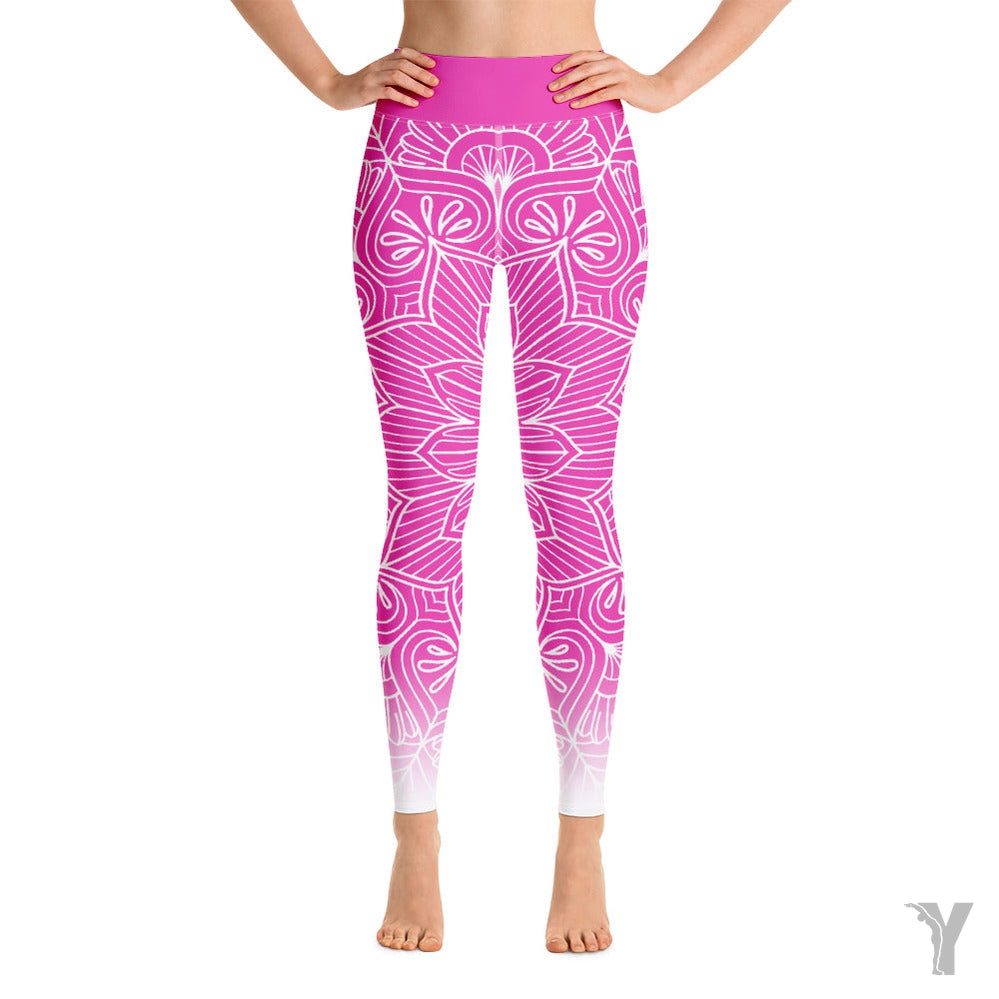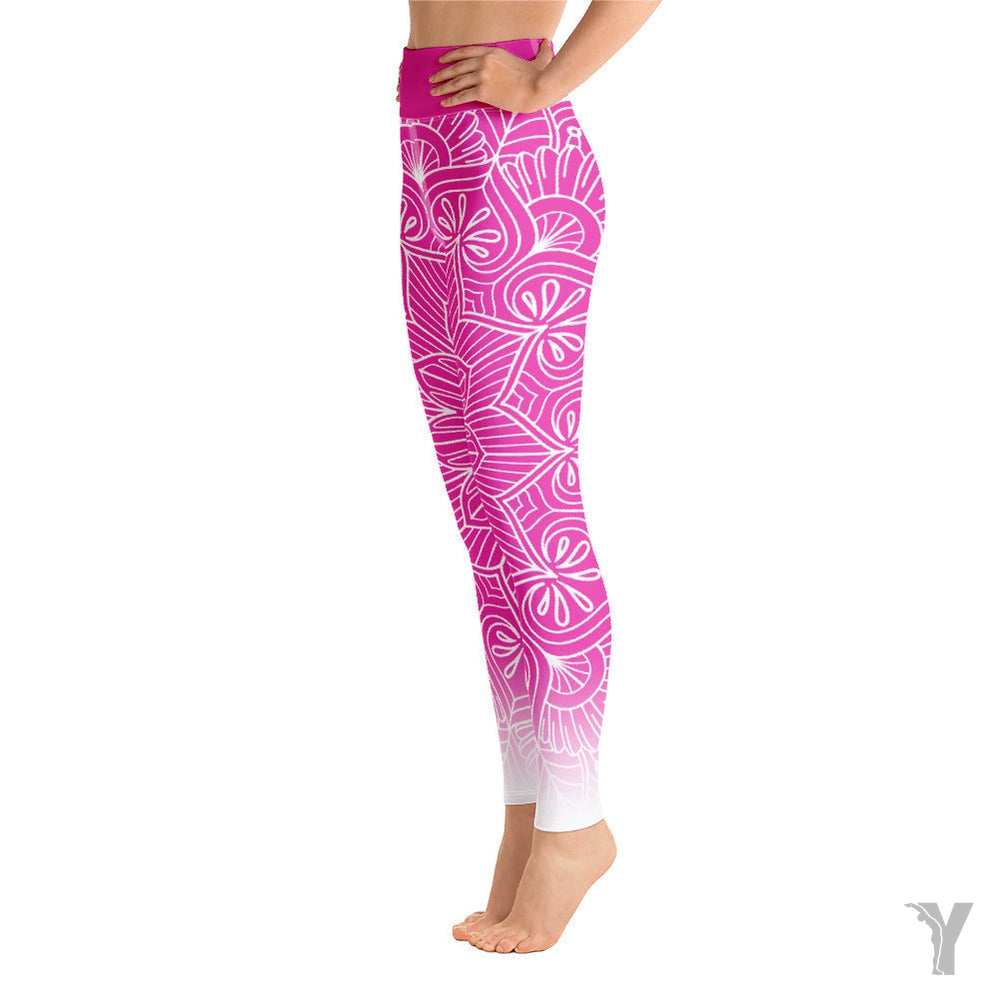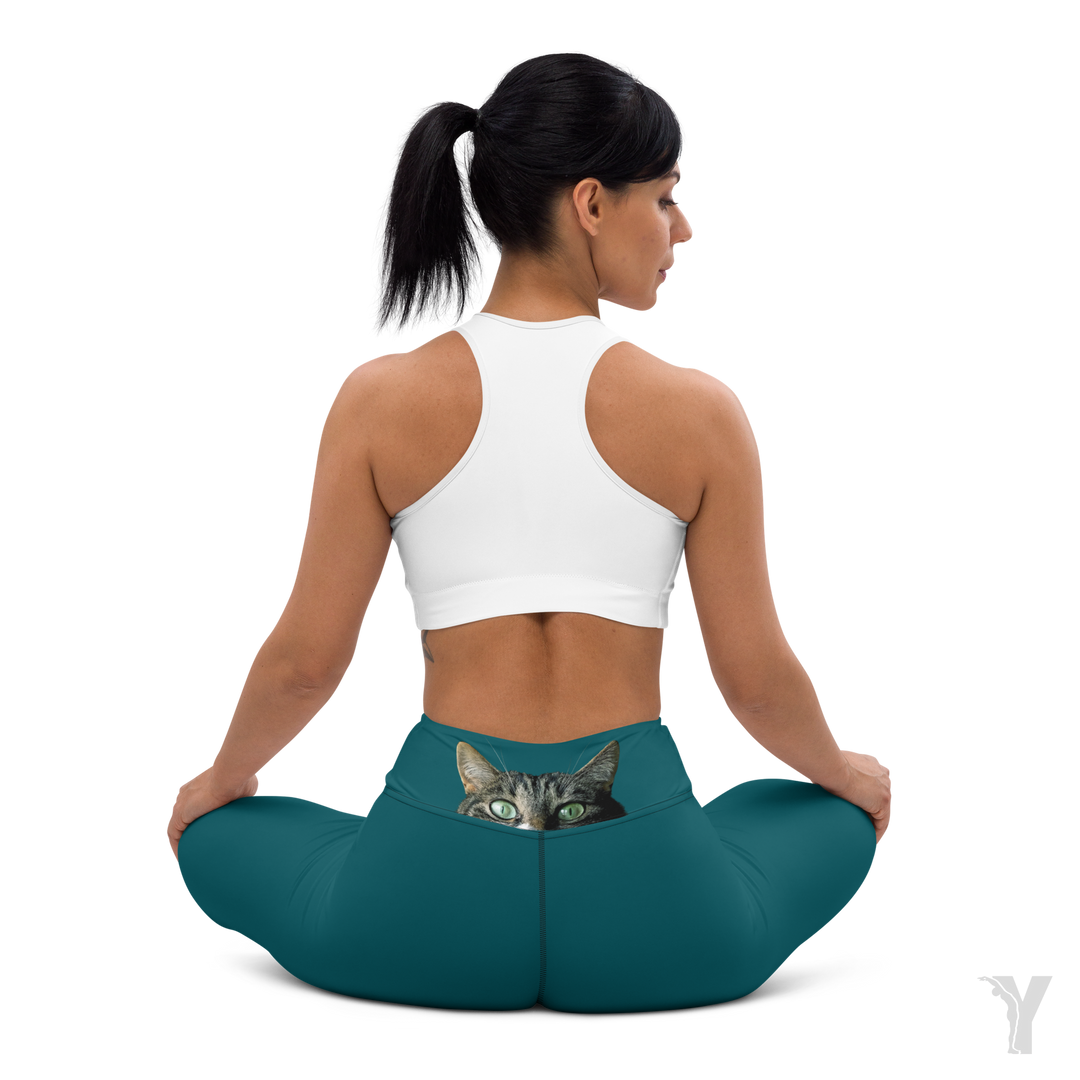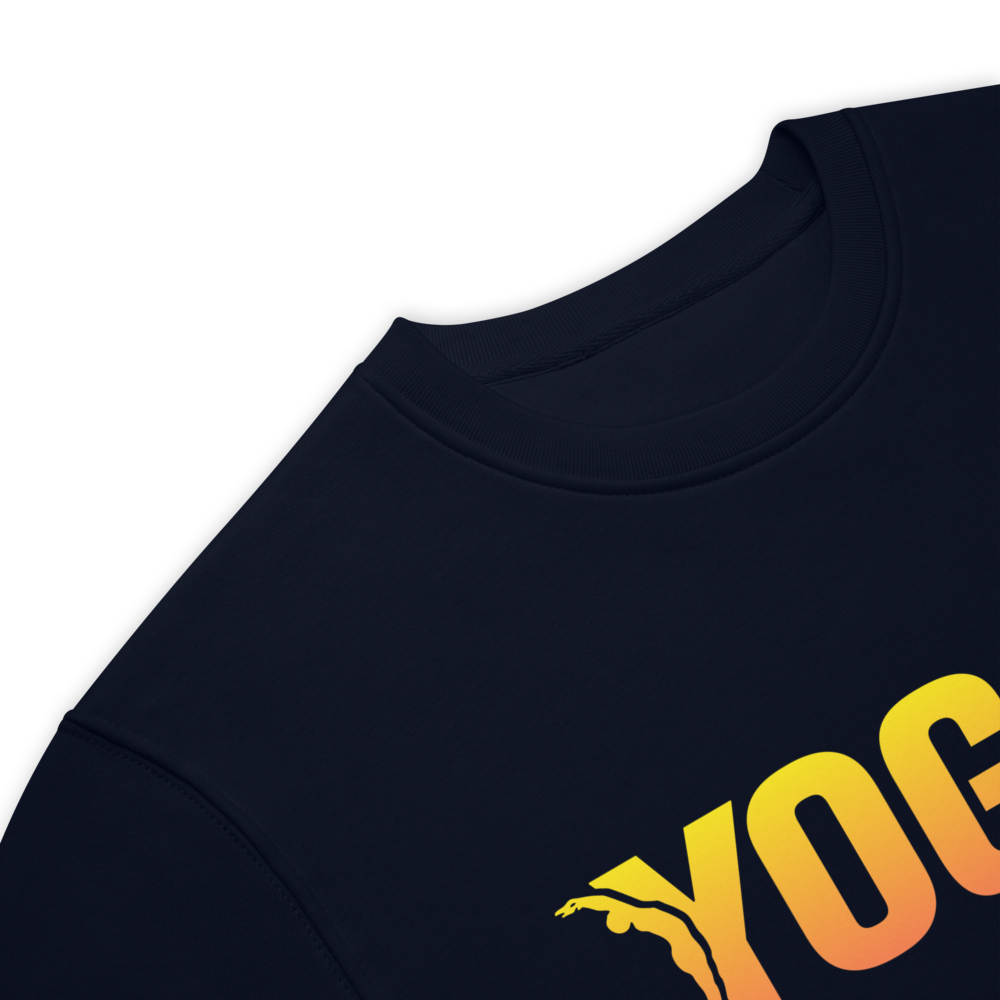Aerial Yoga: Discovering an innovative practice
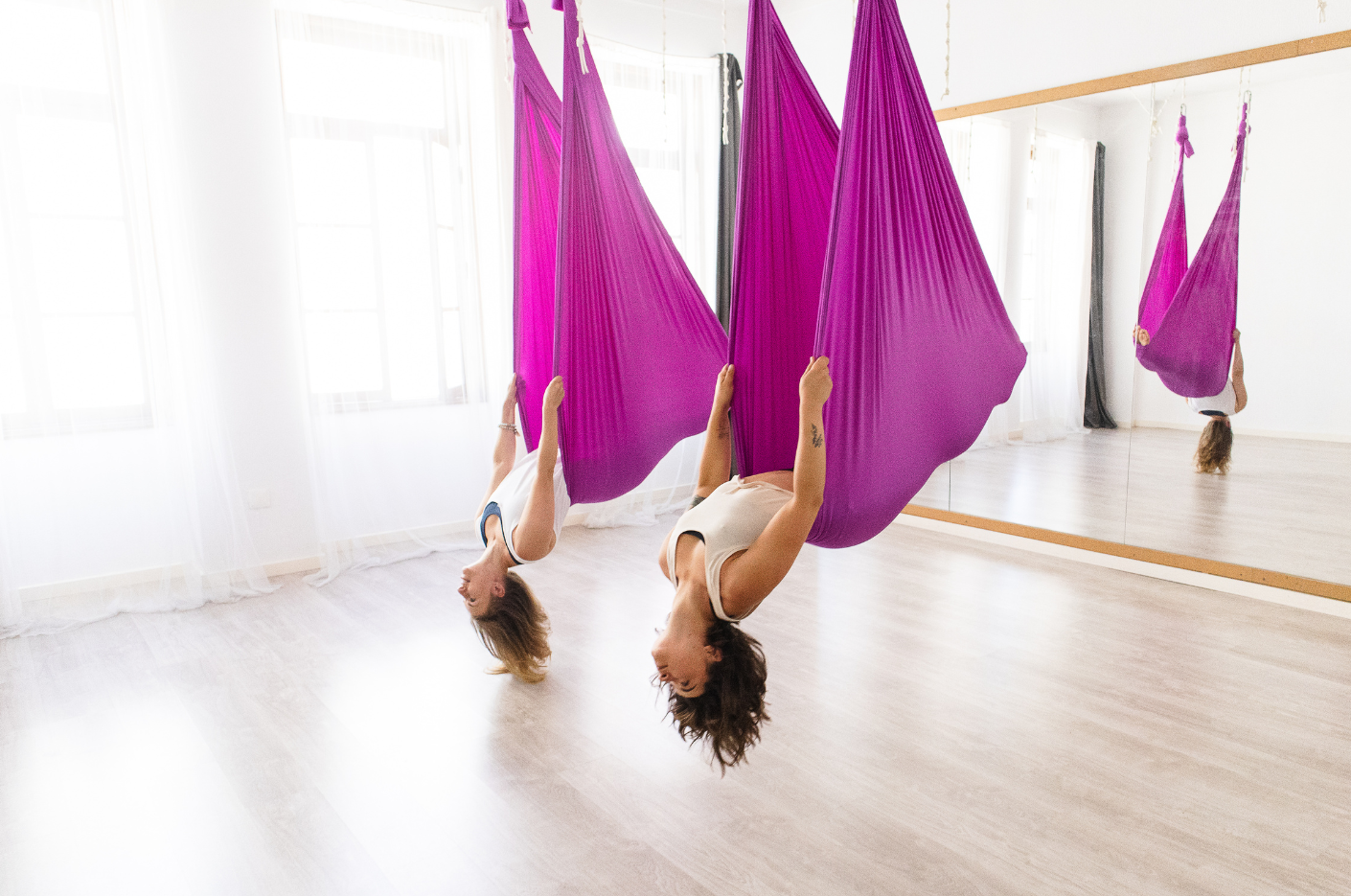
In the large yoga family, there is one that is being talked about more and more: aerial yoga (or fly yoga ); it is a discipline combining traditional yoga postures with acrobatic movements in suspension.
Using a fabric hammock hung from the ceiling, this practice allows a new approach to physical and mental well-being.
In this article, we invite you to discover the fundamentals of aerial yoga, the necessary equipment, how to practice and integrate this discipline into your daily life.
In the podcast Yoga Whatever the Cost, we ask Natacha about her career and fly yoga - find her interview here 🎙️
What is aerial yoga?
Aerial yoga, also called fly yoga or anti-gravity yoga, is a modern form of yoga that uses a fabric hammock as its primary tool.
The hammock provides support for performing complex postures, deep stretches, and inversions safely. This practice, created in 2009 by Christopher Harrison , a dancer and gymnast, combines traditional yoga postures with elements of gymnastics and aerial dance. In 2009, Frenchwoman Florie Ravinet contributed to its development in France by collaborating with physiotherapists to create "Fly Yoga."
Contrary to popular belief, aerial yoga is accessible to everyone, even beginners and children as young as 3. No prior experience in traditional yoga is necessary. Classes can be adapted to different levels, allowing for step-by-step progression.
However, it is not recommended for pregnant women, people weighing more than 120 kilos, and those suffering from cervical pathologies .
Differences with traditional yoga
Unlike traditional yoga practiced on a mat on the floor, aerial yoga adds a three-dimensional dimension to the practice. The hammock allows for weightless movements, facilitating inversions and reducing pressure on the joints. This approach engages stabilizing muscles, improves body alignment, and develops proprioception, providing a unique and enriching experience. Being in the air changes one's relationship with one's body and space, allowing one to diversify one's perspective and clear one's mind.
The benefits of aerial yoga are numerous. Physically, this practice strengthens muscles, improves flexibility, and stimulates blood circulation. Inversions, made more accessible by the hammock, decompress the spine and relieve tension. Mentally, aerial yoga reduces stress, improves concentration, and boosts self-confidence. The floating sensation provides deep relaxation and an incomparable sense of freedom.

The necessary equipment
Introducing the Yoga Hammock
The yoga hammock is the central element of aerial yoga practice. It is made of durable, elastic fabric, capable of supporting the body's weight while providing optimal comfort. This hammock is attached to the ceiling using sturdy hooks or straps, allowing for a secure practice.
Depending on the asanas, the use of the hammock changes, either unfolded or used as a rope, a bit like a mat, you will develop a particular relationship with this accessory.
Other essential equipment and accessories
In addition to the hammock, a few accessories can enhance your aerial yoga practice. These include yoga mats for better grip, yoga blocks for additional support during poses, and straps to aid in stretching. Comfortable, fitted clothing is also recommended to allow for optimal freedom of movement.
Tips for choosing your equipment and outfit
When purchasing your aerial yoga equipment, prioritize quality and safety. Make sure the hammock is made of durable fabric and that the hooks and straps are sturdy and securely attached. Also, check the manufacturer's weight recommendations and installation instructions. Don't hesitate to read online reviews and seek advice from specialty stores or experienced practitioners.
For an aerial yoga session, it is recommended to wear tight-fitting leggings and a fitted t-shirt or tank top. Long hair should be tied back, and for women, a suitable bra is recommended for good chest support .
Practice aerial yoga
Where to practice: specialized studios vs. at home
Aerial yoga can be practiced in specialized studios or at home. Studios offer a safe environment with qualified instructors to guide beginners. Practicing at home requires proper setup and a good understanding of basic postures. It is recommended to start in a studio before attempting it on your own.
Precautions to take to avoid injuries
Like any physical activity, aerial yoga requires certain precautions. Warm up properly before each session to prepare your muscles. Practice on a stable surface and make sure your equipment is properly set up. Listen to your body and avoid sudden movements or uncomfortable postures. If you feel any pain, stop immediately and consult a professional if necessary.
Basic postures for beginners
To get started in aerial yoga, here are some simple postures to try:
- Child's pose (Balasana) in suspension : sitting in the hammock, knees tucked under you, arms stretched out in front.
- Plank pose (Phalakasana) in suspension : feet in the hammock, hands on the ground, body aligned in a plank.
- The hanging bat pose (Viparita Karani) : hips supported by the hammock, head down, arms relaxed towards the ground.
These basic poses will help you get familiar with the hammock and gain confidence before moving on to more advanced movements.

Integrating aerial yoga into your daily routine
How Aerial Yoga Can Improve Your Daily Routine
Aerial yoga can transform your daily routine by offering a new approach to well-being. Regular practice helps relieve built-up tension, improve posture, and increase flexibility. Mental benefits, such as reduced stress and improved focus, can also improve your quality of life.
Combining aerial yoga with other types of yoga or physical activities
Aerial yoga can be combined with other types of yoga or physical activities for a more complete practice. For example, you can alternate between floor yoga sessions and suspended sessions to work different aspects of your body. Aerial yoga also pairs well with activities like Pilates or dance, offering a variety of movements and exercises.
In short, aerial yoga is an innovative practice that combines the benefits of traditional yoga with acrobatic movements in suspension. Through this discipline, you can improve your strength, flexibility, and mental well-being. Transform your routine and experience the unique benefits of aerial yoga today!





